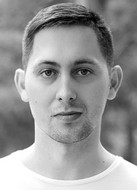Physical development specifics in academic body-building groups
Фотографии:
ˑ:
Postgraduate student I.D. Kharisov1
Dr.Biol., Associate Professor A.V. Nenasheva1
PhD, Associate Professor A.S. Aminov1
S.V. Korneeva1
1South Ural State University (National Research University), Chelyabinsk
Subject to the study were 18-22 years old qualified academic athletes (n=20) specializing in street workout and powerlifting sports. The study data were obtained by the bodily anthropometrical measurements and body composition assessment by Tanita Test system. The test data showed the powerlifting group leading in virtually every body component rate versus the workout group despite the fact that some physical development rates were lower in the powerlifting group – for instance, the average body mass index was estimated at 25.235 ± 0.67 kg/ m2 indicative of the excess body mass (pre-obesity) versus 22.57 ± 0.39 kg/m2 (normal) in the workout group. The study showed the trunk/ limb fat tissue rate (%) and mass (kg) in the powerlifting group being higher than in the workout group; albeit the powerlifting group was tested with the higher muscular mass, basal metabolism and total body water mass rates. The anthropometric data showed the powerlifting group leading in the physical development rates including chest width, stronger body build, higher biceps excursion rate, and more developed lower limbs and shoulders. It was also found that the workout group body build is on average closer to the ideal shape than that of the powerlifting group.
Keywords: students, bodybuilding, powerlifting, workout, comparative analysis, physical development, body composition, anthropometrical measurements, sport qualifications, body proportions.
References
- Weider J. Sistema stroitelstva tela [Bodybuilding system]. Moscow: Fizkultura i sport publ., 1992, 112 p.
- Dvorkin L.S., Slabodyan A.P. Tyazhelaya atletika. Uchebnik dlya vuzov [Weightlifting. Textbook for higher schools]. Moscow: Sovetskiy sport publ., 2005, 600 p.
- Kuzhuget A.A., V.B. Rubanovich, R.I. Aizman Morfofunktsionalnye pokazateli zdorovya studentov v zavisimosti ot rezhimov organizovannoy dvigatelnoy aktivnosti [Morphological and functional development of students going for different sport activities]. Valeologiya, 2009, no. 4, pp. 21-25.
- Koryagina Yu.V., Matuk S.V. Morfologicheskie osobennosti sportsmenov kak rezultat adaptatsii k zanyatiyam raznymi vidami sporta [The Morphological Characteristics of the Athletes as a Result of Adaptation to the Different Classes in Power Sports]. ONV, 2010, no. 4 (89), pp. 140-142.
- Tajmazov V.A., Khadartsev A.A. Fiziologicheskiy pauerlifting [Physiological powerlifting]. Tula: Tulskiy poligrafist publ., 2013, 120 p.
- Cherepov E.A. Vospitanie silovykh sposobnostey yunoshey-starsheklassnikov na osnove uchebno-trenirovochnogo modulya [Strength building in young senior male pupils based of education-training module]. Vestnik YuUrGU. Seriya: «Obrazovanie, zdravookhranenie, fizicheskaya kultura». vol. 14, no. 2, 2014, pp. 7-13.
- Chto takoe Street Workout? [What is Street Workout ?] [Electronic resource]. ChRPhCSNA "Workout Strength Sport Association of Chelyabinsk Region». Chelyabinsk, 2013-2016. Available at: http://cheworkout.ru/o-dvizhenii/. (Date of access: 18.03.2016).
- Kharisov I.D., Nenasheva A.V., Aminov A.S., Cieślicka M.Z., Mushketa R.K. Assessment of Physical Fitness Indicators in Students Practicing Powerlifting and Street Workout. Human. Sport. Medicine, 2017, vol. 17, no. 1, pp. 67–78. (in Russ.) DOI: 10.14529/hsm170107




 Журнал "THEORY AND PRACTICE
Журнал "THEORY AND PRACTICE